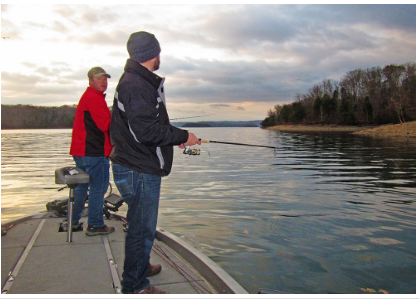The barometric pressure, also recognized as atmospheric pressure or air pressure, is the air’s force against the earth. You’re probably unaware, but barometric pressure affects various factors, from the weather to animal feeding patterns.
You may believe that air is weightless, and you are correct to a certain extent. However, the pressure exerted on the earth’s surface by gas atoms, water vapor, and other particles is negligible. As a result, there is less air above you at a high altitude than at sea level, resulting in lower barometric pressure at a high altitude than at sea level. Barometric pressure can be affected by altitude and low- and high-pressure systems. Numerous fluctuations can occur during a typical day, week, month, or year.
Although barometric pressure is relatively constant across climate zones, certain factors can influence fluctuations associated with local weather patterns, resulting in air pressure ridges that eventually affect barometric pressure. Typically, both atmospheric movement and temperature affect barometric pressure, resulting in either high or low pressure. Slight variations in barometric pressure can have a significant effect on fish behavior. It is primarily because everything in water sinks, floats, or suspends in mid-water. Thus, changes in pressure behave similarly to changes in gravity, upsetting the way fish move.

Latest Fish Finder Buying Guides: Best Fish Finders for Crappie Fishing Best Fish Finder under $1000 Best Fish Finder under $500 Best Fish Finder under $300 Best Fish Finder under $200
How does barometric pressure affect fishing?
Isn’t it true that fish are much more in tune with their environments than humans are? They have various natural pressure-sensing mechanisms, including lateral lines (sensory organs used to detect vibrations and movement in the water). As a result, they are sensitive to even minor changes in barometric pressure. As a result, anglers benefit significantly from understanding how barometric pressure affects fishing. Even though fish live hundreds of meters beneath the water’s surface, they are susceptible to changes in atmospheric pressure. Again, this is primarily due to their organs.
Fish have swim bladders, also known as air bladders. These bladders are inflated sacs that assist the fish in maintaining its buoyancy. These air bladders inflate to compensate for a decrease in barometric pressure. As the pressure increases, the bladder contracts. These swim bladders can become painful for fish when the pressure changes. The fish may struggle to maintain its balance and, as a result, may feel bloated. To alleviate this discomfort, the fish will attempt to move around in the water.
Smaller fish, on the other hand, maybe more susceptible to this change. When the pressure drops, they are likely to migrate to deeper waters, alleviate their discomfort and help them maintain their aquatic balance.
Not only the fish’s location can change as a result of changes in barometric pressure. Furthermore, their eating habits are affected. For example, most fish will consume more food immediately before and during the passage of a storm. As a result, you’ll want to monitor barometric pressure during either of these times, as both can indicate ideal fishing conditions.
Certain fish species will be less impacted than others by changes in barometric pressure and weather. Although it will have the most significant effect on smaller fish, larger fish will eventually notice the difference. It is possible that larger fish are not physically aware of the difference in air bladder size – they may feel compelled to follow smaller prey fish to deeper waters.

What is “Normal” Barometric Pressure?
Often, you can predict the barometric pressure simply by examining the area’s norms. If you are at a high latitude, for example, your barometric pressure will be lower. There are also standard ranges for each area. Generally, the baseline pressure is in the range of 29-30 inHg. It varies by location – if you live at a high elevation, this may not be the case. Watch out for the weather situation and patterns in your immediate area to establish a baseline. Otherwise, if you consider 29-30 inHg normal, you will notice that pressure drops as a storm approaches. Your readings may range between 26 and 29 inHg in this condition. As the storm passes, the barometric pressure will rise. A day with a pressure greater than 30 inHg is typically considered a high-pressure day.
Which Barometric Pressure Level is Most Appropriate for Fishing?
While nearly everyone will give you conflicting advice, most of the time, there is a barometric pressure that is more favorable for fishing than others. When fishing in conditions of high pressure -30.50+ and clear skies, fish will bite slowly, typically in deep water or near cover. You’ll need to fish more slowly, as they’ll appear passive and hesitant to bite. When the pressure ranges between 29.70 and 30.40, the weather is pleasant, and the fishing is pretty consistent.
Not fantastic, but indeed not atrocious. You may find that you need to use a variety of baits and equipment to attract fish. Conditions with low pressure, or pressure less than 29.60, will result in slow fishing. Typically, the weather is cloudy and rainy, necessitating cover or deep water to target fish.
The fish will become more active as pressure increases, and the weather improves. Once again, you’ll want to target fish in deep water or near cover. Fish kept in stable conditions, or favorable weather will behave normally. Again, the fishing is not spectacular, but it is not atrocious either. Now is an excellent time to test new baits and tackle.
Finally, when the weather turns bad, or the pressure drops, this is your opportunity to shine. The best fishing occurs under these conditions, as the fish are more than willing to accept any food offered to them. While some of the best fishing occurs during a declining or decreasing pressure, this does not guarantee that it is the most reliable. If you want to know what to anticipate – even if it’s not always the best – fishing under constant pressure is the best way to do so.
Which Weather Conditions are Favorable for Fishing?
While changes in pressure can stimulate fish activity, incoming weather systems can as well. A strong cold front, for example, can have a dramatic effect on how fish feed and behave. Rather than the weather or air pressure itself, it is frequently caused by the effects of the weather change. For instance, when a spring cold front cools the water temperature in a shallow bay, fish migrate to deeper, warmer water. You’ll notice that the bites have entirely ceased. However, the timing of calmer weather is critical. When the climate is hot at the end of summer, a beautiful day that cools the water’s surface temperature can trigger a feeding frenzy.
The Advantages of Fishing in Favorable Conditions vs the Disadvantages of Fishing in Adverse Conditions
When the weather is nice – what I refer to as a “bluebird day” characterized by clear skies and calm waters – you may wish to reconsider your fishing technique. Generally, you’ll want to focus your efforts on areas of cover, keeping in mind that fish will be less active. Proceed cautiously and methodically. When fishing with slight pressure, the fish typically congregate deeper. As a result, they will be less active in their feeding, and you will also need to slow down to attract them.
Looking for Fish Finder? Best Fish Finder for the Money Best Kayak Fish Finder Best Portable Fish Finder Best Ice Fishing Fish Finder Best Small Boat Fish Finder


